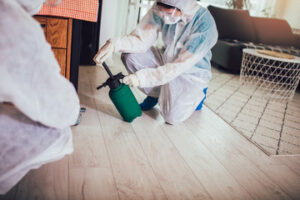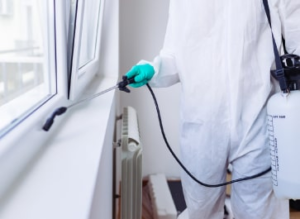Hair Extensions San Francisco is a beauty staple that can add length, volume, and a range of looks. They can be braided, glued in, woven, or clipped in.
However, one must be careful with these extensions and only get them placed by a professional stylist. Mistakes during the application process can damage natural hair, hampering the overall look.

Synthetic hair extensions are synthetic fibers designed to look like human hair. They can be found in various colors, lengths, and styles. The type of fiber used can significantly affect the look and feel of the hair and the level of styling flexibility. For example, Kanekalon and Toyokalon fibers are both considered more natural-looking than other types. They also offer a softer texture than other fibers. On the other hand, polyester and acrylic hair extensions have a slightly glossy finish and don’t absorb as much moisture.
Both types of hair extensions can be difficult to take care of. Human hair extensions may need regular washing and conditioning to keep them looking their best. They can also be styled with heat tools and dyed to create different looks. However, these extensions’ high maintenance and cost can make them unsuitable for those who want a more casual or temporary look.
For these reasons, many people prefer synthetic hair extensions. They are less expensive than human extensions and can last for a few months. Synthetic hair can be purchased from various places, including beauty supply stores and online retailers. The price of synthetic hair depends on the quality and the retailer.
Another advantage of synthetic hair extensions is that they are more resistant to humidity and rain than human hair. This can be a huge benefit, especially for those who live in areas with unpredictable weather. For example, a blow-dried, styled hair-piece can quickly become tangled or frizzy in humid conditions. But a synthetic hair-piece will stay bouncy and shiny even when it’s raining.
It’s important to consider the advantages and disadvantages of each type of hair extension before deciding which one is right for you. Those who want a more natural-looking and versatile style should choose human hair, while those who want a quick and affordable solution should choose synthetic extensions. It’s also a good idea to consult with an expert before making a purchase. They can help you find the perfect extensions for your specific needs and goals.
I-tips
I-tips are the perfect solution for those looking to add length and fullness without using adhesive tapes or a heat method. This method uses small bead strands that are attached to your hair with a special tool. The strands look very natural and are easy to maintain. However, this method is not cheap, and it’s best to consult with a stylist to determine what length and style you’re interested in. This will help you understand how many bundles of I-tips are needed and the cost of the extensions.
I-tip extensions can be used to create a wide range of styles, from curls to straight hair. The beads are tiny, and they lay softly against the scalp. Because of this, they are virtually invisible. They also blend well with all types of colors. The extensions are also made of real human hair, and they can be worn for a long time with proper maintenance.
Another advantage of I-tips is that they are easy to install and remove. Your hairdresser will simply use a special hair extension tool to uncrimp the beads and then slide them out of the hair. This method is also safe for those with sensitive skin or a reaction to glues.
You can find these extensions at AiryHair, and they are available in a variety of lengths from 6 to 30 inches. This is a great option for women who want to go from a bob to a mermaid-like length, and they can be used to add volume or even color.
I-tips can last for months, depending on the condition of your hair and the type of extensions you choose. It is recommended to visit a stylist every four to six weeks to have the cylinders opened and any shedding or dead hair removed. Also, make sure to be gentle when brushing and washing your hair, and don’t rub too hard around the beads.
Micro-link
Microlink hair extensions are a popular choice for women who want to add volume and length to their tresses. However, this technique isn’t suited for everyone. It can damage your natural hair if not installed properly. The best way to avoid this is by consulting a professional stylist who can ensure the best results. Choosing the right extension type is also important. It’s essential to know your natural hair’s length and texture before getting a microlink hair extensions install. For example, if your hair is too short, the beads won’t be secure enough and may cause tangling or damage. It’s also important to avoid heat styling your hair with high-heat settings or wands, which can melt the beads.
A microlink hair extensions install is a great option for those who want to transform their appearance without damaging their natural hair. The procedure is fast and easy, but it’s crucial to maintain proper care to protect your new strands. Using a mild shampoo and conditioner that’s free of heavy oils and proteins will help keep your strands hydrated. Also, be sure to use a towel that’s gentle on your hair and doesn’t cause tangling or snagging.
The good news is that microlinks last longer than other types of hair extensions. With regular maintenance, you can expect your microbeads to last for up to six months. However, it’s important to note that the process is pricier than other hair extensions, including clip-in and tape-in styles. In addition to the cost of the hair and installation, microbeads also require in-salon maintenance appointments every six weeks to reposition the beads and detangle any new growth.
Regardless of what type of hair extension you choose, it’s important to find an experienced stylist who is familiar with your desired look and can provide quality service. Choosing the right stylist will ensure that your new extensions blend seamlessly with your natural hair and look flawless.
The best way to determine if you’re a good candidate for microlinks is to visit a professional stylist and ask questions. They’ll be able to recommend the perfect style and color for your hair. They’ll also be able to answer any other questions you have about the process.
Fusion/pre-ponded
Fusion hair extensions are a popular choice for those who want to add length and volume to their hair. They are durable and look natural when styled. They also come in a variety of colors, so you can experiment with different shades to match your hair color. Fusion hair extensions are easy to care for, but they can be damaging if not properly maintained.
A fusion extension has a small, flat keratin bond that holds the hair in place. This type of hair extension is applied strand by strand. It requires a significant amount of time to apply, and the process is technical. Therefore, it is best for stylists who have the experience and knowledge to perform this technique.
The keratin bond is melted with an application tool before being pressed against the client’s own hair strands. The bonds are invisible once cooled, making fusion extensions a great option for people with thin or fine hair. In addition, fusion extensions are very versatile and can be worn with your hair up or down.
Fusion extensions are made of human hair and come in various lengths, from 14 to 28 inches. These extensions are a good choice for those who have thinner hair and want to add more volume. The best thing about fusion extensions is that they are durable and can last up to six months with proper care.
Another benefit of fusion extensions is that they are very easy to remove. The keratin glue that holds the extensions in place can be loosened with an alcohol-based hair extension remover. Once the glue is loosened, you can gently pull the hair extension off.
Unlike other types of hair extensions, fusion bonds do not damage your natural hair. However, they can cause tangling or matting if you use heat styling tools on them. It is important to protect your fusion hair with a heat protection spray. It is also important to wash your hair regularly and keep it hydrated with a volumizing shampoo and conditioner. If you want to swim with fusion hair, be sure to wear a swim cap.








